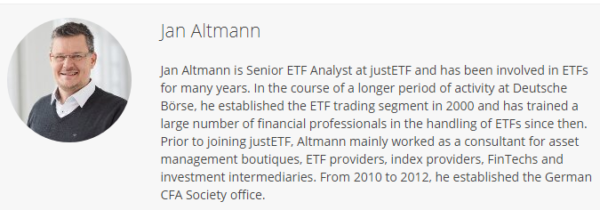Nov
2024
ETF liquidity: what you need to know
DIY Investor
9 November 2024
Investors buy and sell ETFs via the stock exchange. Popular ETFs change owners every millisecond. When an ETF order book is full then it is highly liquid and investors benefit from low bid-offer spreads. We explain why low bid-offer spreads are important and how you can assess ETF liquidity.
The more frequently you trade ETFs, the more important it is to understand how liquid your holdings are. Liquidity – in the case of ETFs – refers to how easily you can trade and at what cost.
The most obvious indicator of an ETF’s liquidity is its bid-offer spread. The spread is a cost of doing business and is the difference in the price you’d pay to buy an ETF versus the price you’d get if you sold it (just like exchanging foreign currency at the airport). The spread is pocketed as a commission by market makers – the financial middlemen who match buyers with sellers on the stock exchange.
The more efficiently market makers can fulfil the orders of buyers and sellers, the tighter the spreads are for any financial product. The most significant factors that influence ETF liquidity are:
- The liquidity of the ETF’s underlying assets – this matters because high demand for an ETF can be most easily met by creating new shares in the fund. If the underlying asset is, for example, FTSE 100 shares, then it’s relatively simple for Authorised Participants to go into the market and buy FTSE 100 shares that can be transformed into additional shares of a FTSE 100 ETF.
- Market maker competition – the more market makers that compete to fulfil orders for a particular ETF, the tighter bid-offer spreads will be as margins are squeezed.
- High daily trading volumes – larger money flows in and out of the most popular ETFs create greater opportunities for efficiency and competition between market makers.
You’ll notice that large ETFs that cover the most popular indices tend to have the tightest bid-offer spreads.
Highly liquid ETFs have razor-thin spreads whereas exotic, niche ETFs often sport much fatter margins.
Spreads can be as low as 0.01% or 10p on a £1,000 order for an S&P 500 ETF. Whereas the spread on a thinly traded ETF can be 1% or £10 on a £1,000 order or even more.
This matters if you trade frequently because buy-sell price differences mount up and subtract from your portfolio’s performance just like any other cost.
The good news is that small investors aren’t penalised on the stock market. The electronic order book treats all market participants equally and you’re more likely to pay a low bid-offer spread on a small order than a giant institutional player would on a huge order that impacts the market.
How does ETF trading work?
In this post, you will learn about ETF price discovery and how to calculate the bid-offer spread.
More on ETF trading
Key trading hours
Another important tip is to correctly time your trades in international ETFs. ETF price discovery is much more accurate when the market that trades its underlying assets is open.
For example, it’s much easier to determine the Net Asset Value (NAV) of a Japanese equity ETF when the Japanese markets are furiously trading its component stocks for everyone to see. If a market is closed then a market maker will widen the bid-offer spread on any ETF that tracks it.
That’s because they need to cover themselves against adverse movements in case their best ‘guess’ about the price of Japanese equities is wrong when the markets reopen. For a similar reason, it’s best to trade commodity ETCs/ETFs when the US markets are open as the underlying assets are generally priced in US dollars.
Our tip: ETFs that track Asian securities are best traded early in the morning, while you should wait until the late afternoon to trade ETFs weighted towards the US or Latin America. To learn more about ETF stock market trading and trading hours, read our article “How does ETF trading work?”
Gauging ETF liquidity
There isn’t a single measure of liquidity but the bid-offer spread is the most serviceable proxy. Broad, efficient market ETFs tracking the most popular indices will generally have tight spreads.
But it’s well worth paying closer attention to the spreads of specialised ETFs such as:
- Emerging market ETFs
- Smart beta ETFs
- Sector ETFs
- Commodity ETFs
- High yield bond ETFs
- Thematic ETFs
Bid-offer spreads fluctuate every day depending on market conditions so it’s a good idea to check in on your chosen ETF’s spread over the course of a few days to assess its size, especially against rival products.
Your online broker or the ETF’s fund provider should both provide buy and sell prices on their websites.
If there’s little to choose between ETFs then the most liquid over time will tend to be the ones with the most assets-under-management (AUM), daily trading volume and market makers.
Can I sell my ETF anytime?
Bid-offer spreads can and do widen during market turmoil, particularly in niche markets.
This is because market makers are exposed to greater risk when they buy ETFs from sellers and move them on to new buyers. In a falling market, a wider bid-ask spread ensures the market maker doesn’t take a huge loss if their ETF shares are bought at a lower price by the new buyer.
Market makers will tend to fatten their margins at times like this but an ETF will continue to trade as long as the underlying market remains liquid.
During the Corona crisis, ETFs have proven that they are tradable although spreads have widened significantly. As a buy & hold investor, avoid trading in such volatile times.
It’s impossible to predict how ETF’s tracking a less liquid market like high-yield corporate bonds will perform in a crisis, so restrict them to a relatively small proportion of your overall asset allocation if you run a portfolio strategy such as Core-Satellite.
Good to know: The London Stock Exchange does limit the maximum spread market markers can charge but the rules can also be temporarily suspended when markets are highly volatile. The LSE allowed spreads to widen in March 2020 to help market makers deal with the Corona-crisis.

Click to visit:

Commentary » Exchange traded products Commentary » Exchange traded products Latest » Financial Education » Latest

Leave a Reply
You must be logged in to post a comment.